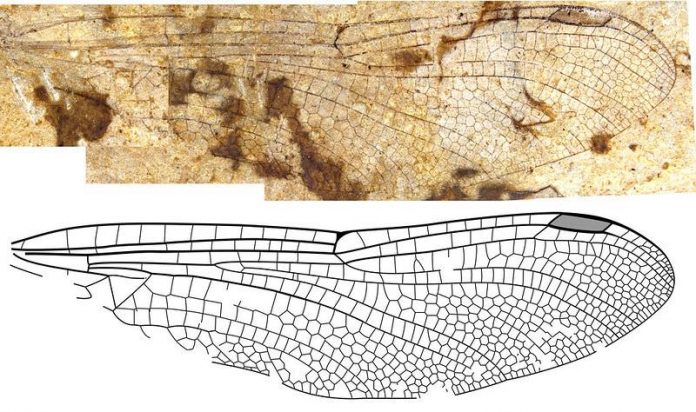Six fossil dragonfly species, dating from about 50 million years ago, are the first from British Columbia and Washington to receive scientific names.
Simon Fraser University paleontologist Bruce Archibald and Royal BC Museum dragonfly expert Robert Cannings examined nine rare dragonfly fossils from the McAbee fossil site in B.C., 75 kilometers west of Kamloops, and from the town of Republic in northern Washington. These fossil beds preserve a record of life just over a dozen million years after the extinction of the dinosaurs.
Archibald found one of the McAbee fossils, but the rest had been waiting in museum drawers to be interpreted.
The researchers discovered the fossils represent eight previously unknown species, six of which were well-enough preserved to be given scientific names. The research duo has just published their findings in the scientific journal The Canadian Entomologist.
They say that while some of the fossil insect groups from these beds lived alongside the dinosaurs before eventually becoming extinct, and would be strange to see today, these dragonflies belong to modern families, mostly to a diverse group called the darners.
Archibald says they would not look out of place today flying beside a modern pond. Other dragonfly groups that are familiar today appear to have begun their diversification to modern dominance shortly after.
“This is rather intriguing,” he says, “as many of the closely related damselflies that we’re looking at in our next project don’t appear so modern at all. Why these two groups had such different evolutionary trajectories, we don’t know.”
One of the new species appears closely related to another fossil species of the same age from Denmark. This is not surprising, says Archibald, because North America and Europe were then connected by continual land across Greenland, when mild climates predominated right to the Arctic Ocean.
“You could probably have walked from Kamloops to Copenhagen without getting your feet wet, through forest all the way,” he says.
Says Cannings, “It was wonderful to see a dragonfly from the club-tail family show up in these fossils. They were pretty common in the Early Cretaceous Period, but weren’t seen again until tens of millions of years after the time of our new fossil species. This begins to fill in about a 66-million-year gap in their evolutionary history.”
Dragonfly fossils are comparatively rare. This study was based on only nine fossils out of the perhaps tens of thousands of insects that have been found in these fossil sites. Cannings explains the fossils were formed when dead insects fell into lakes, eventually sinking to the muddy bottom. This mud was compressed into shale over millions of years. He says their large wings may have helped dragonflies float for a longer time on the water surface before sinking. During this time, their chances of being scavenged or decaying was great.
“Not many would have become fossils,” says Cannings. “These few that did help us begin to understand the ancient history of these beautiful insects in our region.”















